#101 Follow Me to a Typical Miao Village in Southwest China(1) - First Impression 🇨🇳 苗寨印象(一)| 摄影月旦评
Hey my Steemit friends, I hope you are all having a lovely weekend so far? =) I haven't blogged for a while since I have been tied up with a project at work for the past week, and now I'm happy to be back! This time it's not my feet itchy to travel around, but my hands itchy to write travel posts! ;)
So now let's visit a typical Miao minority ethnic region in Southwest China. Considered to be the largest living museum of the Miao primitive culture, this group of small villages - Xijiang Qianhu Miao Village is located in the mountainous region in Guizhou Province. I reached this place from Kaili, a nearby city known as the cradle of certain ethnic minorities in China.
各位周末愉快!这刚过去的一周多一直在连夜赶工一份技术专利校对和翻译,眼珠子都快掉进厚厚一沓设计图纸里了,现在终于有空来写文,手痒痒得不行啊。=) 对,一般是脚痒痒想四处旅行,但这些年满世界走动,输入很多,觉得有不少内容亟待输出,很开心能在这里和大家分享。今天就请跟我去中国西南最典型的苗寨一探究竟吧!西江千户苗寨位于贵州省凯里市附近的雷公山,包括十余个依山而建的苗族小村落,是全国乃至全世界最大的苗族聚居区,来到这里仿佛置身于一座巨大的苗民生活博物馆。
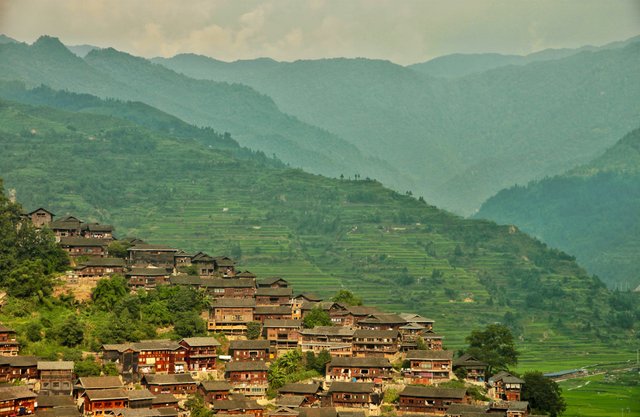
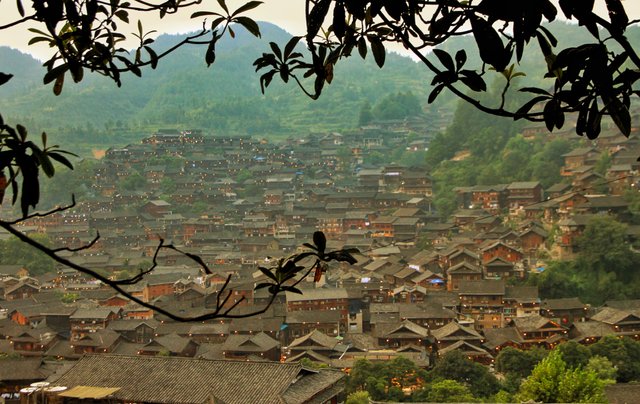
Its name Xijiang Qianhu Miao Village literally means "a thousand household(Qianhu) by West River(Xijiang)". Since it's a well-known consolidation of typical Miao communities, the main village here can get pretty touristy. Yet it's a great cultural destination with particular charm, especially when you go to explore the less-visited surrounding hills.
The locals have been living for centuries in those wooden houses on the slopes of hills. Look at how people's residences blend with the natural settings! I was amazed by such perfect harmony. From my photos, you can see the idyllic scenery, which is even more breathtaking when all the houses are lit in warm lights at night. By then it's more obvious to tell the outline of the whole village that resembles a buffalo head. Miao people see buffalo head as an auspicious totem that wards off evil spirits. I've found this shape and symbol widely used in patterns and decorations in the village, such as the top of the traditional headpiece I tried out (pictured below).
.jpg)
Generation after generation, the people here work in the surrounding rice paddies and make exquisite Miao silverworks, batiks and embroideries. They chase away bad spirits with silver jewelry, and cure their illness with all kinds of Miao herbal medicine from the dense mountain forests.
They celebrate life events with plenty of local festivals, when people (mostly women) put on their finest silver jewelry and embroidered costumes. I tried out one copy with fake silver jewelries (pictured above), and it's not that easy to walk around with the huge headpiece and all those bling bling decorations. You can imagine how heavy it is when it's genuine silver all over your body, but well, like always, many are willing to pay a price for looking good. ;) Plus it's a cool tradition to wear this on festive days, and the girls might be happy to dress up when there were not many choices in clothing or accessories in deep mountains in the early times...
In events like wedding, celebration of new-borns and village gathering, Miao people have a traditional way of sharing food called Long Table Banquet. The hosts are supposed to sit at the left side of the table and the guests at the right side. Besides enjoying the delicious local delicacies like fish in sour soup, cured meat, ham and sausages..., the hosts toast the guests with rice wine and folk songs. Imagine hundreds of people sitting around a long table to share all the food and joy. Sounds fun, isn't it? :) I didn't get the chance to witness a big event like that, but only found this dining etiquette being applied in many restaurants in the village.
In these festivals and celebrations, Miao people is also known for their colorful traditional singing and dancing. In my coming posts I'd love to share the video clips of their lively performance.
The most typical architectures in Miao villages are the wooden stilted houses(Diao Jiao Lou 吊脚楼) and Wind & Rain Bridges(Feng Yu Qiao 风雨桥), as you can see from my photos below.
Like most visitors, I stayed in a beautiful guest house modified from a local building. The wooden stilted houses are usually built on a 30-70 degree mountain slope without any nails and rivets. What a smart way to fit into the environment, and it creates the magnificent views for both the inhabitants and people watching from afar.
There are normally three floors in a building for different uses. The lowest floor is for raising poultry and livestock, storing tools, etc. The second floor is the living space, with central room, bedroom, kitchen and place for making embroidery. The top floor is used to store grain, fodder and other goods.
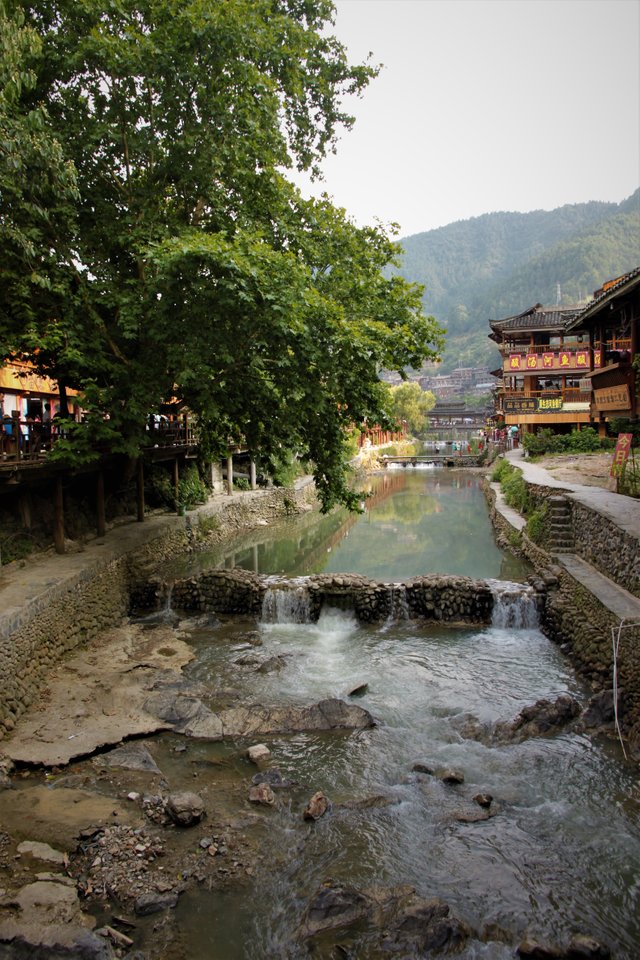
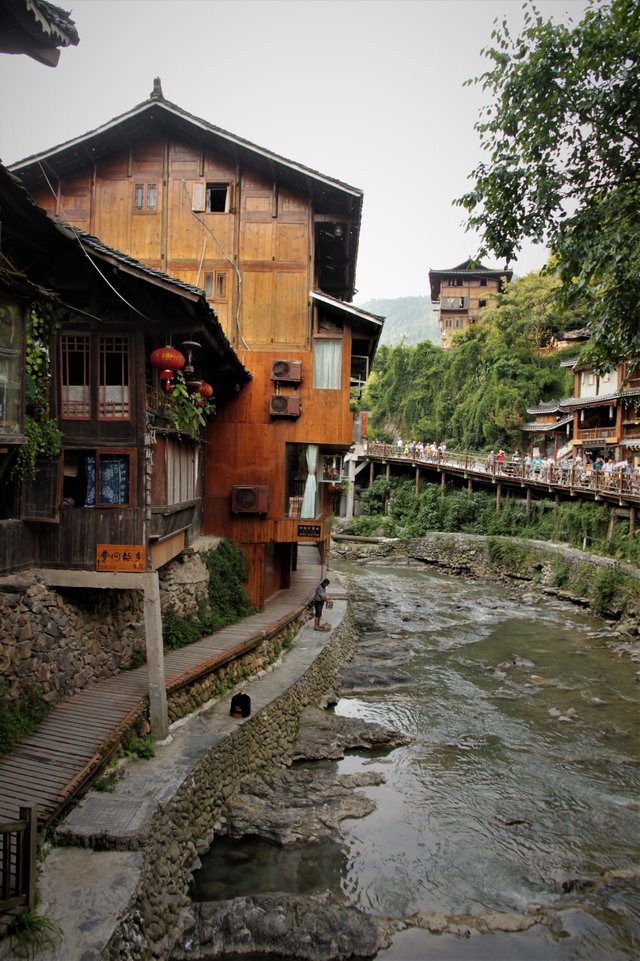
The five Wind & Rain Bridges are crossing the main river in the village. They are popular venues for villagers as well as visitors to have a rest. Just like the rest, I loved enjoying the different but equally fabulous views from these bridges both during daytime and at night. They are built based on “Feng Shui” (风水) in Chinese culture to bring good luck and convenience to the locals. These bridges used to be built in wooden structures without any nails, but now they are rebuilt in more sturdy concrete and wood to withstand floods.
I was walking along the Xijiang river that snakes through the village, and it's sad to see the polluted unclear water. I witnessed some restaurants by the banks directly discharging waste water into the river:
我沿着穿寨而过的河流漫步,看到大部分河水很混浊,污染严重,痛心地发现不少两岸的餐馆就直接将污水排入河中:
Tourism has brought new opportunities for the Miao villagers, but I've seen locals stick to their traditional ways of living, not just for the tourists.
.jpg)
I had a chat with the sweet old lady from this hilltop guest house and batik workshop. She told me some interesting old traditions in their Miao villages, such as the sacrificial ceremony and agricultural meetings hosted by hereditary heads. She also recalled how she met her husband from her village nearby and moved here after marriage, and how things have changed since this place was listed as a cultural heritage site.
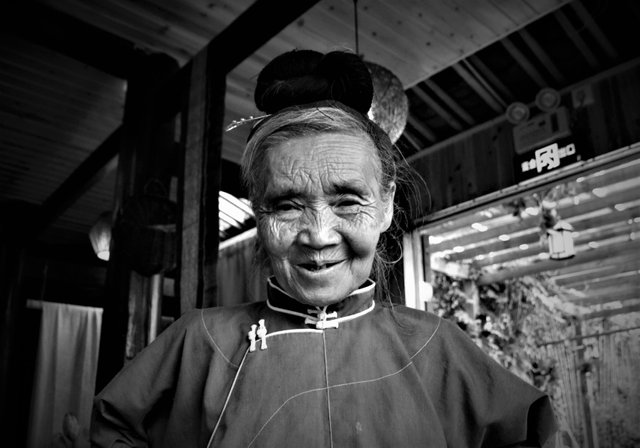
All content by @itchyfeetdonica
图文 by Donica多
Thank you for reading. Please tell me what you think in the comments. Until next time! =)
感谢阅读!你的关注/点赞/留言/转发就是对我最好的支持~ 下次见!:)

Here are some screenshots from my Instagram. Follow @ItchyfeetDonica for more adventures around the globe !

!steemitworldmap 26.490989 lat 108.173168 long Xijiang Qianhu Miao Village, China d3scr
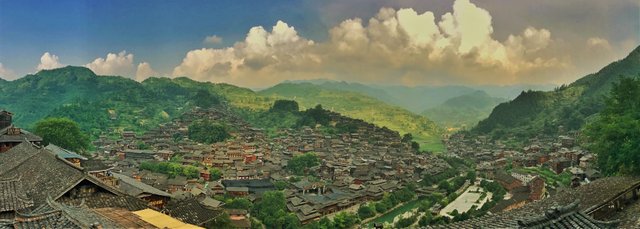
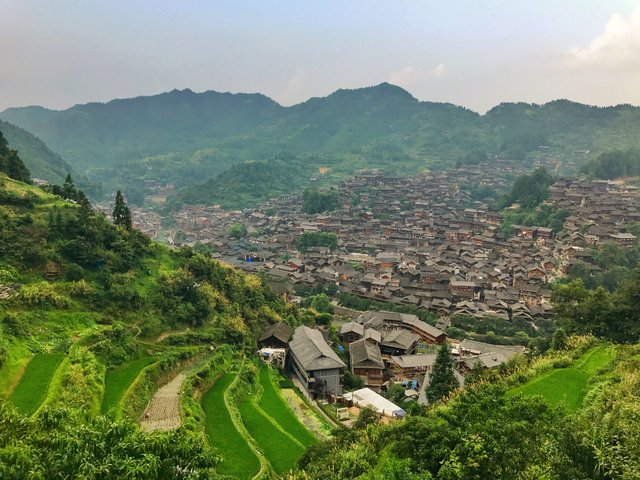
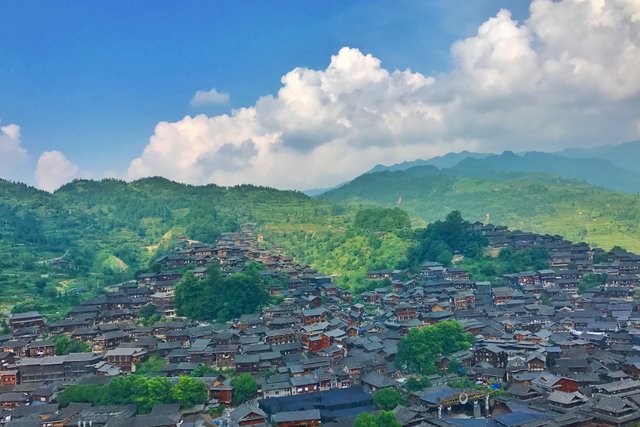
.JPG)
.JPG)
.JPG)
.JPG)
.JPG)
.JPG)
.JPG)
.JPG)
.JPG)
.JPG)
.JPG)
.JPG)
.JPG)
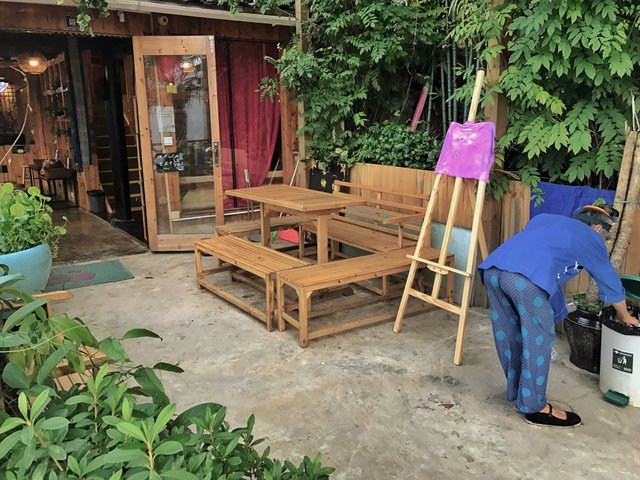
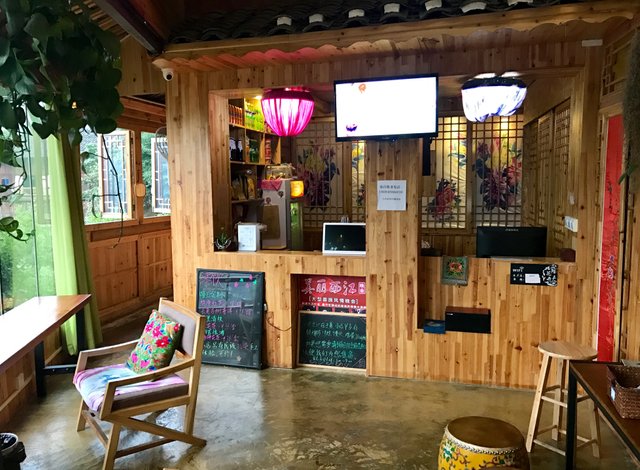
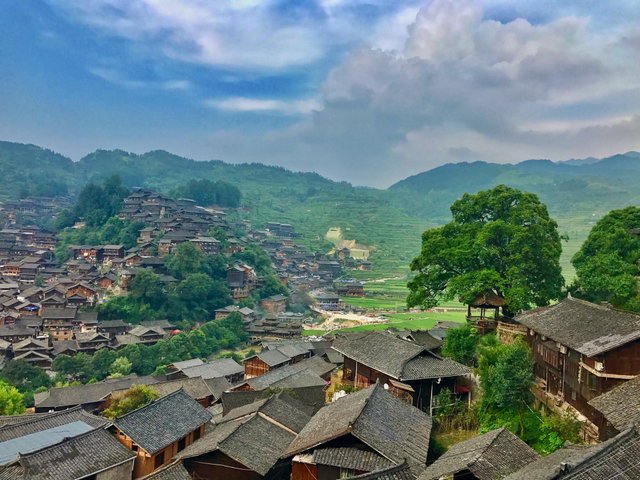
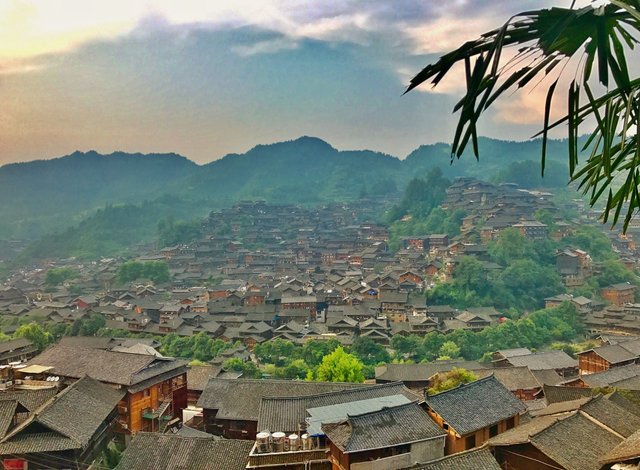
照片拍的真好
谢谢夸奖 🙂
你是大功臣,能分享这么美的苗寨。国家应好好保护起来,再不要破坏!
贺老师过奖啦 说得对 有些污染还挺严重
Wow the pics and the village really give a genuine traditional feel, and it seems that there aren't that many tourists but I may be wrong.
Waiting for the video clip on next post :)
There were many tourists in the main village, but much less in the smaller ones. Thanks for your visit and comment! :)
Do this ethnic minority speaks a different dialect or Chinese Mandarin in comparison with the rest of China? It is pity the waste in the river remind me something similar in India and even sometimes in some part of my country.... By the way I found funny the sense of humor concerning the itchy hands to write posts :) :) Thanks for sharing
Thanks Phil for stopping by! Yes the river pollution is a serious problem in many places. This minority group has their own dialect, but most people can speak Mandarin too. :)
I see so it is a dialect of Mandarin thanks for your response
天哪!好有味道的地方。整個村莊結構、建築風格、服飾花紋等,都像是另一個超脫塵世的世界,美得令人咋舌!
你這麼年輕就滿世界走動呀?羨慕~ 喔,不!是嫉妒!哼!
不年轻啦 😄 怎么没有你可爱的招牌动图?哈哈
月旦评语:
村庄脱俗宛若世外桃源,镜头下的人们平和真实且美好,仙境之下,污染的侵蚀却让人更为痛心。镜头能传达美好,也能呼吁美好,希望环保的声音能传达得更广。
Congratulations, Your Post Has Been Added To The Steemit Worldmap!
Author link: http://steemitworldmap.com?author=itchyfeetdonica
Post link: http://steemitworldmap.com?post=101-follow-me-to-a-typical-miao-village-in-southwest-china-1-first-impression
Want to have your post on the map too?
哇塞!我敬佩你... 那么厉害...
怎么可以叫你笑渣波
笑渣波不厉害吗 😂
哈哈哈哈哈哈 笑渣波没有威严啦……😝
Amazing article and picture ! Love it !
Thanks! :)
Heya, just swinging by to let you know you're being featured in our Daily Travel Digest!